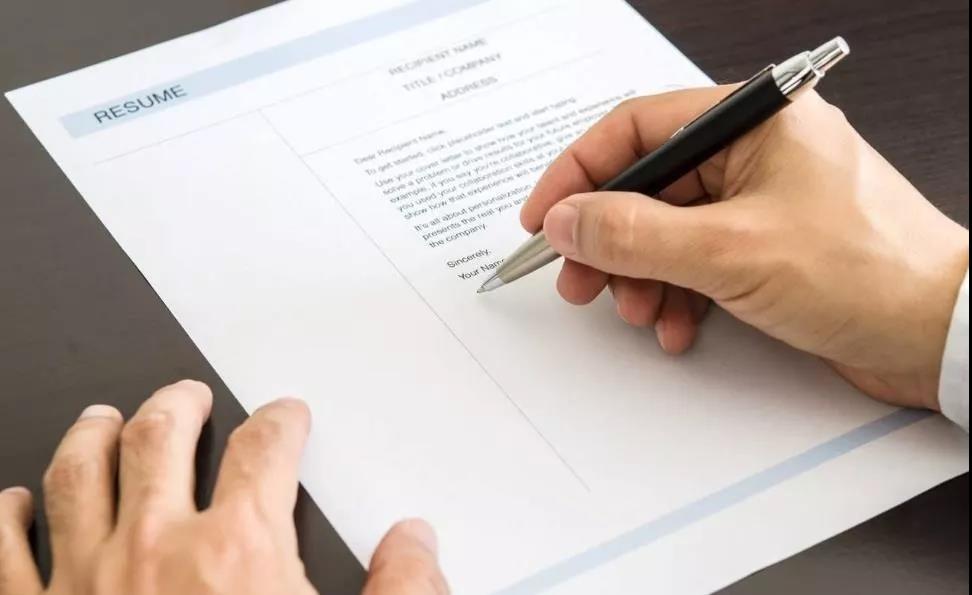下面是小编为大家整理的高中形容词副词(2022年-2023年),供大家参考。

语法复习专题四——形容词和副词一、考点聚焦 1、形容词、副词的作用与位置 形容词是用来修饰名词的,常被放在名词前作定语,或放在系动词后面作表语。而副词 则用来修饰形容词、动词,其他副词或者句子,一般位于形容词之前,动词之后或句子之首。以下属几种特殊情况,须牢记; (1)
形容词短语作定语,定语后置。
a language difficult to master, a leaning tower about 180 feet high
(2)
表语形容词( afraid 、 alike 、 alone 、 asleep 、 awake 、 alive 等)作定语,定语后置。如 a man alive。有些表身体健康状况的形容词如 well、faint、ill 只作表语。sick 既可作表语又可作定语,ill 如作定语意为“bad”。
(3)
用作定语,修饰由不定代词 one 、 no 、 any 、 some 和 every 构成的复合词如 anything 、 something 等时,通常后置。如:
I have something important to tell you.
(4)
else 常用作疑问代词和不定代词的后置定语。
(5)
enough、nearby 修饰名词前置或后置,程度副词一般位于形容词、副词前面,enough修饰形容词、副词时,必须后置。
(6)
几个副词并列作状语时,其顺序较灵活,但一般是:方式→地点→时间。如:
We had a good time together outdoors last Sunday.
(7)
频度副词如 often、always、usually 等在 be 动词后,行为动词前。
(8)
副词作定语,定语后置。如:
The person there is waiting for you.
(9)
几个并列的形容词作定语,其语序通常为:限定语(The、A)+ 描绘性形容词 + size (大小)
+ shape (形状)
+ age (年龄、时间)
+ color (颜色)
+ origin (国籍、来源)
+ material
(材料)+ purpose(目的)+ 名词。如:
a heavy black Chinese steel umbrella,
the man ’ s first tow interesting little red French oil paitings
(10)
以-ly 结尾的词性辨析。
①下列单词以 -ly 结尾,但却是形容词而非副词:
lively 、 lonely 、 lovely 、 deadly 、 friendly 、
ugly、silly、likely、brotherly、timely 等。
②表愿意(无 -ly )和引申意 ( 有 -ly) 的副词:
deep 深
wide 宽广
high 高 low 位置低deeply 深入地 widely 广泛地 highly 高度地
lowly 地位卑微
1
③有无-ly 意义大不相同的副词:
dead 完全,绝对 be dead asleep deadly 非常 be deadly tired pretty
相当
be
pretty
certain
that „ prettily 漂亮地 be prettily dressed close 近 Don’t sit close. closely 密切地 Watch closely! late 晚、迟 arrive late, come late
lately 最近 I haven ’ t seen him lately(recently). 2、复合形容词的构成 (1)形容词 + 名词 + ed kind-hearted 好心的, white-haired 白发的(2)形容词 + 形容词 red-hot 炽热的,dark-blue 深蓝的 (3)形容词 + 现在分词 good-looking 好看的,easy-going 随和的 (4)副词 + 现在分词 hard-working 勤劳的,fast-moving 快速转动的 (5)副词 + 过去分词 hard-won 得来不易的,newly-made 新建的 (6)名词 + 形容词 life-long 终生的,world-famous 世界闻名的 (7)名词 + 现在分词 peace-loving 爱好和平的,fun-loving 爱开玩笑的 (8)名词 + 过去分词 snow-covered 白雪覆盖的,hand-made 手工的 (9)数词 + 名词 + ed four-storeyed 4 层楼的,three-legged 3 条腿的 (10)数词 + 名词(名词用单数)
ten-year 10 年的 ,two-man 两人的3、形容词和副词的比较等级 (1)
原级的构成和用法。
构成:形容词、副词的原级即本身。
用法:表示双方在程度、性质、特征等某方面相等时,用“ as
+
原级形容词 / 副词
+
as ”的结构;表示双方不相等时,用“not so(as) + 原级形容词 / 副词 + as”的结构;表示一方是另一方的若干倍时,用“倍数 + as + 原级形容词 / 副词 + as”的结构。如:
Xiao Wang is as tall as Xiao Yu. This building looks not so (as)high as that one. Miss Xu speaks English as fluently as you .
This room is three times as large as that one.
(2)
比较级和最高级的构成。
掌握比较级和最高级的变化规则,熟记少数不符合规则的特殊形容词和副词。
2
(3)
比较级的用法。
①对方比较,表示一方超过另一方时,用“比较级 + than”的结构表示。如:
This picture is more beautiful than that one. ②表示一方不及另一方时,用“less + 原级 + than”的结构表示。如:
This room is less beautiful than that one. ③表示一方超过另一方的程度或数量时,可在比较级前加表示程度的状语,如even、a lot、a bit、a little、still、much、far、yet、by fay 等修饰。如:
He works even harder than before.
注意:英语的比较级前如无even、still 或 yet 等时,译成汉语时可用“较”或“„一些” 或不译出,一般不可有“更”。如:
She is better than she was yesterday Please come earlier tomorrow.
另注意:by far 通常用于强调最高级。用于比较级时,一般放在比较级的后面,如在前面,应在二者中间加“the”。如:
He is taller by far than his brother.
He is by far the taller of the two brothers.
④表示一方随另一方的程度而变化时,用“the + 比较级(主语 + 谓语),the + 比较级(主语 + 谓语)”的结构(意为“越„„越„„”)。如:
The harder he works, the happier he feels.
⑤不与其他事物相比,表示本身程度的改变时,用“比较级 + and + 比较级”的结构。如:
The weather is getting colder and colder. The girl becomes more and more beautiful.
⑥某些以 -ior 结尾的形容词进行比较时,用 to 代替 than 。这些词有 inferior (劣等的,
次的)、 superior (较好的,优于„„)、 junior (资历较浅的)、 senior (资格较老的)、
prior (在„„之前)等。
He is superior to Mr.Zhang in chemistry.
⑦在比较从句中为了避免重复,我们通常用 that(those) 、 one(ones) 代替前面出现的名词。that 指物,one 既可指人又可指物。that 可代替可数名词单数和不可数名词,而one 只能代替可数名词。
The book on the table is more interesting than that( 或 the one)on the desk. A box made of steel is stronger than one made of wood.
⑧倍数表达法。( A )
A is three(four, etc.)times the size(height, length etc.)of B. 这座新楼是那座旧楼的四倍大(高)。
The new bui9lding is four times the size(the height)of the old one.
3
这座新楼比那座旧楼大三倍(高三倍)。( B )
A is three(four, etc.)times as big(high, long, etc.)as
B. Asia is four times as large as Europe. 亚洲比欧洲大三倍。( C )
A is three (four, etc.)times bigger(higher, longer, etc.)than B. Your school is three times bigger than ours. 你们的学校比我们的学校大三倍。用 times 表倍数通常用于三倍以上,两倍可以用twice 或 double. (4)最高级的用法。
①三者或三者以上相比,表示最高程度时,用“the + 最高级”的结构表示。这种句式一般常有表示比较范围的介词短语。如:
Zhang Hua is the tallest of the three. He works(the)hardest in his class.
②最高级可被序数词以及 much 、 by far 、 nearly 、 almost 、 by no means 、 not quite 、 not really 、nothing like 等词语所修饰。如:
This hat is by far / much / nearly / almost / not nearly / by no means / not quite / nothing like the biggest.
How much did the secon most expensive hat cost?
③表示“最高程度”的形容词,如 excellent 、 extreme 、 perfect 等,没有最高级,也不能用比较级。
④形容词最高级修饰作表语或介词宾语的名词、代词时,被修饰的词往往省略。如:
He is the tallest (boy) in his class.
⑤作状语的副词最高级前可以不加定冠词。如:
Of all the boys he came (the) earliest. (5)形容词和副词前面使用冠词的情况。
①形容词最高级前一般要加定冠词,副词最高级前可不加冠词。
②形容词最高级前有时加不定冠词,或不加冠词,不表比较,表示“非常”。如:
He is a most clever young policeman.(a most=very) The film is most interesting.(most=very)
③表示两者间“较„„的一个”比较级前加the。如:
who is the older of the tow boys?
④在“the + 比较级„,the + 比较级„”结构中。
⑤在 same 前一般要加 the。
⑥有些形容词前加 the 成为名词。如 the poor、the rich 等。
(6)由 as / so 组成的形容词或副词短语。as much as + 不可数名词数量。
Each stone weighs as much as fifteen tons. She could earn as much as ten dollars a week.
4
②as many as + 可数名词数量 多达 I have as a many as sixteen referrence books.
③as early as 早在 As early as the twelfth century the English began to invade the island.
④as far as 远到;就„„而知(论)
We might go as far as ( 走到 )the church and back.
As far as I know(就我所知),he has been there before. ⑤ may (might, could)as well 不妨、不如 Then you might as well stay with us here. ⑥as „ as can be 到了最„„的程度,极其
They are as unreliable as they can be.他们极其不可信。
⑦as „ as one can He began to run, as fast as he could. ⑧as „ as possible Just get them to finish up as quickly as possible. (7)几组重要的词语辨析。
①very 和 much 的区别。(A)可分等级的形容词和副词前使用 very 不用 much。(B) 表示状态的过去分词前用 very 。
a very frightened boy, a very tired child, a very complicated problem, 一般的情况下,以 -ing 、 -ed 结尾的分词多用 much 、 very much / greatly 等修饰。如:
We were greatly shocked by the news about Tom. I was much amused by Jack ’ s attitude 。
(C) 已转化为形容词的现在分词前用 very 。如:
very interesting / worrying / exicting 。( D )
too 前用much 或 far, 不用 very 。
You are much / far / a lot too nice. 另外,在 too many / much, too few / little 前用 far 。
There ’ s far too little opportunity for adventue these days.We ’ ve got far too many eggs and far too few egg cups.(E)关于原级形容词要记住下列固定的修饰结构:(a)修饰绝对意义的形容词,一般不用 very, 而用 quite completely 、 well 、 entirely 。如:
quite wrong(mistaken, sure) 、 completely dead 、 quite impossible 、 quite perfect 等。( b )修饰以 a- 开头的形容词,多有特殊的修饰词:
quite alone, very much alone, wide awake, fast asleep, very much afraid 。
(c) 修饰一些特殊形容词的修饰语有:
be well worth, much the same, freezing cold, quite different, terribly cold / frightening。
②so „ that „ 与 such „ that „ 的区别。
so + 形容词 / 副词 + that „
so + 形容词 + a(n)+ 单数可数名词 + that „ so + many / much / little / few + 名词 + that „ such + a(n)+ 形容词+单数可数名词 + that „ such + 形容词 + 不可数名词 + that „
such + 形容词 + 复数名词 + that „
注意:下列结构中只能用 so 不可用 such, 当名词前有 many 、 much 、 little 、 few 等表示“多、
5
少”的词修饰时,如 so much progress 、 so many people 、 so little food 、 so few apples 等。但当 little 表示“小”时用 such 。如:
These are such little boys that they can ’ t dress themselves. 下列 so 的用法是错误的:so a diffcult problem,so difficult problems, so hot weather。
③其他几组词的辨析。(A)ago、before:ago 表示以现在为起点的“以前”;before 指以过去或将来的某时刻为起点的“以前”。泛指“以前”用 before 而不用 ago。(B)already、yet 、 still:already 表示某事已经发生; yet 表示期待某事发生; still 表示某事还在进行,主要 用于肯定句。
(C)too 、 also 、 either:too 和 also 用于肯定句, too 多用于口语, also 多用于书面语, either 用于否定句。(D)good、well:与 good 不同的是,well 作形容词,只能在系动词后作表语,表示“身体状况好”,也作副词修饰动词。(E)quick、fast:作形容词皆表“快”。fast 多指运动的物体,含持续的意思。quick 多指一次动作的敏捷、突然,而且持续的时间较短。(F)real、true:形容词表“真的”。real 强调真实存在的而不是幻想的,在句中常作定语;true 指与事实标准和实际情况相符合,在句中作表语或定语。
(G)hard 、 difficult: 均表“困难”,但 hard
通常指体力上困难;difficult 则指智力或技能上的困难,困难程度大于 hard。它们都可作定语和表语。
二、精典名题导解选择填空 1.
It is generally believed that teaching is
it is a science. ( NMET 2001 )
A. an art much as B. much an art as
C. as an art much as D. as much an art as
2.
It is always difficult being in a foreign country,
if you don ’ t speak the language.(NME...



